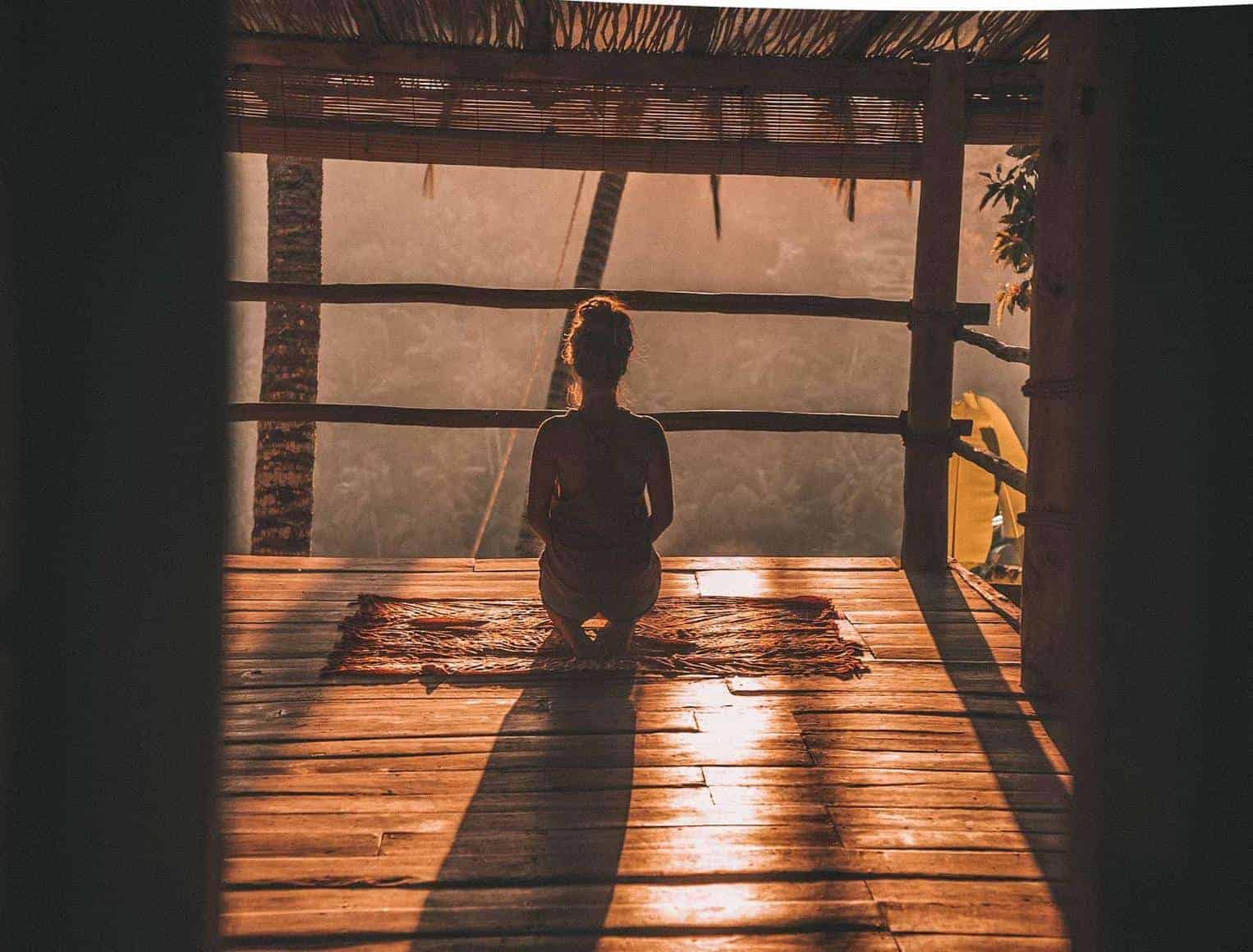Meditation is an ancient practice that has been used for centuries to promote relaxation, mindfulness, and self-awareness. While there are many different ways to meditate, one of the most important factors is the meditation position.
The position you choose can impact the quality and depth of your meditation experience. For example, sitting in a chair with your feet flat on the ground is a common meditation position that helps encourage good posture and prevent restlessness.
Alternatively, sitting cross-legged on the floor is often used for deeper meditation practices as it can help to still the mind and body. Ultimately, the best meditation position is the one you are most comfortable with and allows you to focus wholly on your meditation practice.
Six Best Meditation Positions
Here are our top picks for the best meditation positions.

Quarter Lotus
The Quarter Lotus meditation position is a popular position for meditation, as it allows the spine to remain straight while the hips and knees are relaxed. The position is achieved by sitting with the legs crossed, and then tucking one foot behind the opposite ankle.
For many people, this position is more comfortable than the Full Lotus, as it does not require the same level of flexibility. In addition, the Quarter Lotus can be easily modified to suit individual needs.
For example, people with tight hips may choose to sit on a meditation cushion or support their knees with blankets. Ultimately, the Quarter Lotus is a versatile and accessible meditation position that can be enjoyed by meditation beginners and experts alike.
Half Lotus
Meditation is a practice that can be beneficial for both the mind and the body. While there are many different ways to meditate, one popular position is known as Half Lotus.
In Half Lotus, the meditation practitioner sits with one leg crossed in front of the other, with both feet resting on the ground. The hands are typically placed in the lap, palms up. This position helps to keep the spine straight and promotes a sense of balance and calm.
Half Lotus can be adapted to different levels of flexibility, making it an accessible position. For those looking to add meditation to their wellness routine, Half Lotus is a great place to start.
Full Lotus
The Full Lotus meditation position is a sitting position that is often used for meditation. To assume the position, sit on the ground with your legs crossed and your feet resting on your thighs. Then, place your hands in your lap with your palms up and your thumbs touching.
The Full Lotus position is said to be helpful for meditation because it helps to keep the spine straight and the mind focused. In addition, the position is believed to promote circulation and help to prevent stiffness in the joints.
While the Full Lotus position may take some time to master, it can be a helpful way to improve your meditation practice.
Burmese
The Burmese meditation position is a popular way to meditate. It involves sitting with your legs crossed and resting your hands on your lap. This position can be done with or without a meditation cushion. If you choose to use a meditation cushion, it should be placed under your buttocks so that your legs are not elevated.
The Burmese meditation position is said to be beneficial because it helps to straighten the spine and open the hips.
Additionally, this position can help to prevent pain in the knees and ankles. When meditating in the Burmese position, it is important to keep your back straight and your chin slightly tucked. You may also want to place a hand on each knee. close your eyes and focus on your breath. Begin by taking slow, deep breaths and then gently exhale.
Once you have settled into a rhythm, you can begin to focus your attention on a mantra or an object of meditation. The Burmese meditation position is an effective way to calm the mind and achieve inner peace.
Chair Position
The chair meditation position is a great way to meditate if you have limited mobility or are new to meditation. To begin, sit in a chair with your feet flat on the ground and rest your hands on your lap. Make sure your back is straight and your shoulders are relaxed.
Close your eyes and take a few deep breaths. Then, focus your attention on your breath and count each inhale and exhale. Continue breathing deeply and focus your attention on the sensations in your body.
If your mind starts to wander, simply bring your attention back to your breath. Chair meditation is a great way to focus on the present moment and release stress.
Seiza Pose
Seiza Pose is a traditional meditation position that originated in Japan. The word “seiza” actually means “correct sitting,” and meditation practitioners often use this pose in order to achieve a state of mind-body harmony.
In Seiza Pose, the practitioner sits on their heels with their back straight and their hands resting palm-up on their thighs. This position can be quite challenging for beginners, but it is said to offer numerous benefits, including improved circulation and increased flexibility.
With regular practice, Seiza Pose can help to improve your meditation practice and promote mind-body balance.
Final Word
These were just a handful of the numerous meditation positions. To know more about meditation positions, make sure to do your research well. While each position has its positives, it doesn’t mean it is the right position for you.
Each person has a different body type, and some positions might prove counterproductive if you have certain problems. Therefore, it is better to consult a meditation expert or a teacher to figure out which position is right for you and which one isn’t.
















